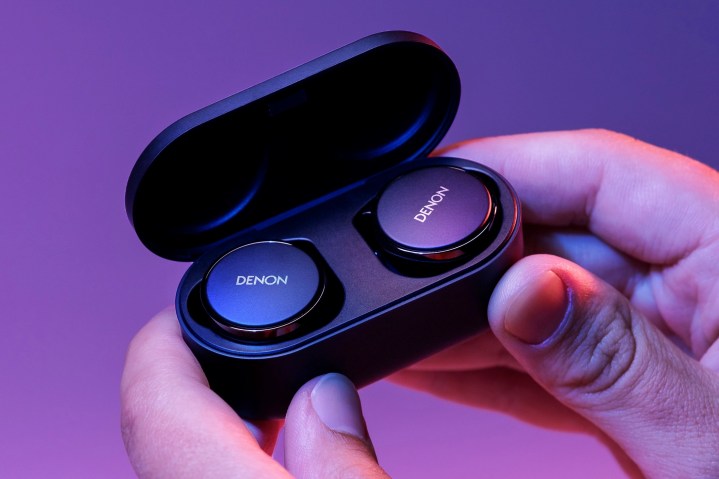
In April 2023, Denon announced that it had acquired Australian wireless earbud maker, Nura, and that we could expect to see new earbuds from the combined brands “soon.” Today, Denon has effectively relaunched Nura’s two wireless earbuds — the NuraTrue and NuraTrue Pro — as the Denon Perl ($199) and Denon Perl Pro ($349). Denon says a limited number of Denon Perl and Perl Pro headphones are now available for purchase at Denon.com, with a full rollout planned for later this year.
The Perl and Perl Pro, which Denon has stylized with a capital L (PerL), appear to preserve all of the NuraTrue and NuraTrue Pro’s features, and in looking at the new Denon earbuds, it appears that they’re also physically identical to Nura’s now-discontinued products. One thing that has changed is the price of the NuraTrue Pro. Already fairly expensive at $329, Denon’s version is now $20 more.

Denon, which was acquired by Masimo along with sibling Sound United brands Bowers & Wilkins, Polk Audio, and Marantz in 2022, is putting a focus on the Perl and Perl Pro’s proprietary sound personalization technology, called Masimo AAT (Adaptive Acoustic Technology). As far as we can tell, this is simply another rebranding of Nura’s technology that measures “faint otoacoustic emissions (OAEs), which are produced by the inner ear in the presence of a range of tones played to assess each person’s unique response to sound.” Judging from the included images in Denon’s press release, even the Nura app for iOS and Android has been rebranded as part of the Perl launch.

When the NuraTrue Pro launched in 2022, they became the first wireless earbuds to support Qualcomm’s aptX Lossless codec, which promises bit-perfect CD-quality audio under optimal wireless conditions. The Perl Pro maintain that feature. Support for aptX Lossless on the mobile phone side of the equation has been slow to grow — the feature requires a recent version of Snapdragon Sound — but perhaps now that it’s being supported by a legendary audio brand like Denon, we’ll start to see greater adoption.

The Denon Perl have active noise cancellation (ANC), plus a “social mode” (transparency). They have six hours of earbud battery life per charge and three additional charges in the case for a total of 24 hours of power. IPX4 water resistance makes them suitable for workouts or running.
The Perl Pro have an improved ANC system, aptX Lossless support, wireless charging, spatial audio from Dirac, Bluetooth Multipoint, and up to eight hours of battery life in each earbud, plus three more charges in their case, for a total of 32 hours of playback.
Denon’s first wireless earbuds, the $159 Denon Noise Cancelling Earbuds (AH-C830NCW) and the $99 Denon Wireless Earbuds (AH-C630W), debuted in 2021 and will continue to be sold alongside the new Perl models.
Editors' Recommendations
- Nothing’s new earbuds upstage Apple, Google, and Amazon by embedding ChatGPT
- Sony WH-1000XM6: the design and features we want Sony’s next headphones to deliver
- Cambridge Audio’s first AirPods Pro competitor has lossless audio, massive battery life
- Audio-Technica’s latest hi-res earbuds debut at CES 2024 for $199
- Sennheiser’s new sports earbuds send heart rate, temperature to popular fitness apps




